Chapter 21: Project Case Study - Creating a Worldwide Search Application for Infotools Inc.
|
InfoTools Inc. is a fictitious global hardware retailing company that needs a search application to enable all its offices to access information. You'll learn how to create this Worldwide Search application using the collections and Verify search concepts you learned about in Chapter 20, "Understanding the Verity Search Engine." This application will implement the following functionality: creating document and database collections, managing collections, and searching interfaces for the databases and document collections.
This chapter describes the case study and design of the Worldwide Search application for InfoTools Inc.
InfoTools Inc. Worldwide Search Application
InfoTools Inc. is a hardware retailing company with headquarters in Palo Alto, California. The company sells hardware such as desktop personal computers, laptops, printers, and networking equipment, as well as data storage devices such as high-capacity hard disks and backup systems. InfoTools sells products from reputed companies such as HP, Compaq, Dell, and Sony. Executives in different countries, such as Singapore, India, Malaysia, Saudi Arabia, the United Kingdom, and the United States, handle the various sales activities. The company has approximately 3,500 employees around the world.
In recent years, InfoTools Inc. has provided all its sales executives with laptops for better performance. The sales executives carry these laptops to client meetings and take their notes in customized software made for InfoTools Inc. The sales interaction is then uploaded to a central database so the sales managers can track the progress made with the clients. The sales managers don't have territory restrictions; they handle teams from different countries. Although the information is available in the central database, it's not easily accessible. Here are the drawbacks of the current system:
-
The information that's common to various clients isn't accessible to the sales manager. For example, if the sales manager wants to identify all the clients interested in buying laptops, the current system won't be able to provide the information.
-
The minutes of meetings and sales requirements are stored in the central database in large text fields. When a search is performed on these fields, correct results aren't obtained.
-
The central database doesn't provide any assistance to a sales executive in Singapore who wants to find a presentation on the latest printers that was made by a sales executive in India. Although the document is available on the Web server, the exact location isn't known, which leads to time wastage.
-
The planning for the next week or next month cannot be based on client interaction because it's impossible to do a search on keywords, such as urgent requirements or products.
The current system lacks an effective search mechanism for creating information, presentations, and proposals. Therefore, the system needs a better information search application based on this central database. After discussions and interviews with the sales executives at various offices, the management has decided to use a Web-based Worldwide Search application. This application should provide the following benefits:
-
It should be possible to effectively search for keywords in the central database.
-
The various documents sent by the sales executives should be grouped into various categories, such as proposals, presentations, technical specifications, and cost calculation sheets. These categories can be used to search for the documents, narrowing down the search domain and speeding up the search.
-
The latest information should be made available online.
-
The information exchange between different sales teams should be sped up, directly affecting the financial performance of the company.
The solution needs to be implemented as a Web-based application that uses a centralized database, accessible only to authorized users. The system administrator should take care of the security aspect. Security should be implemented through Windows 2000 domain logins and IIS security settings. The search interface URLs of the application should be provided to the sales executives. Two URLs should be provided: one to search for documents, such as proposals and presentations, and the other to search the sales interaction information in the central database. The person responsible for the creation and maintenance of the collections on the Web server should have the URLs to manage the search application interface. The administrator will use this interface to create, refresh, and delete collections.
The company doesn't have an internal development team, so it hires a team of software professionals, consisting of a project manager and two application developers. The team decides to use ColdFusion MX to develop the application because it's fast and reliable. ColdFusion MX uses ColdFusion Markup Language (CFML) to develop Web pages and handle Verity search functions. ColdFusion MX applications interact with the Verity search engine through a set of available tags. The existing SQL server will be used as the back end for the application.
The tasks performed during the various phases of the project life cycle are discussed next. To learn the details of the initiation, execution, and deployment phases, refer to Chapters 9, "Project Case Study—Upgrading the Existing ColdFusion 5.0 Application," and 12, "Project Case Study—Creating the Knowledge Bank Application."
Requirements Analysis
The development team studied the various tasks that the sales teams perform and identified the stages in which documents need to be created and uploaded to the Web server. In addition, the team interviewed various employees in the sales offices who use the existing central information storage system. Based on this analysis, the development team determined that two interfaces will be required for this application:
-
User Search interface
-
Admin interface
The development team determined that the User Search interface of the worldwide search application should be easy to use, simple, fast, and interactive. In addition, it should provide the following:
-
Different interfaces for document search and database search.
-
Different formats for the search results of document and database searches. In the document search, the sales executives should be able to download or open the documents. The database search should allow the user to view detailed record information.
-
A search criteria interface to provide multiple keyword searches.
-
Simultaneous access to multiple users.
The Admin interface should have the features for creating searchable collections. The team identified the following requirements for the Admin interface:
-
Creation of document collections.
-
Creation of database collections.
-
Deletion and refreshing of various types of collections.
-
Creation of separate collections for various types of documents.
-
Creation of collections on the various fields of sales interaction data in the central database.
High-Level Design
During this phase, the development team decides on the functionality of the application. The format of the various Web pages is decided and presented to the management for approval. Based on their feedback, the page formats are finalized. Management also approves the final format of the pages.
Figure 21.1 displays the Managing Collections page. The administrator can manage different collections from this page. The section on the top allows the administrator to refresh the selected collection, delete the selected collection, and remove a specific entry from database collections. The section on the bottom allows the administrator to optimize, repair, and delete the document collections.
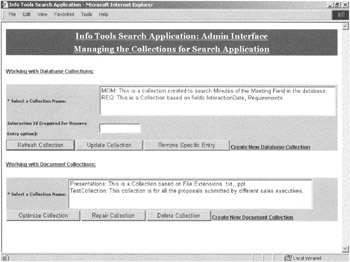
Figure 21.1: The Managing Collections page.
The Managing Collections page provides a link to the Create Document Collections page, shown in Figure 21.2. The administrator will use this page to create document collections.
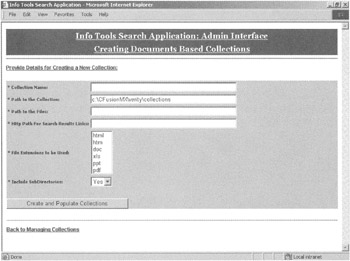
Figure 21.2: The Create Document Collections page.
The Managing Collections page also provides a link to the Create Database Collections page, shown in Figure 21.3. The administrator will use this page to create database collections.
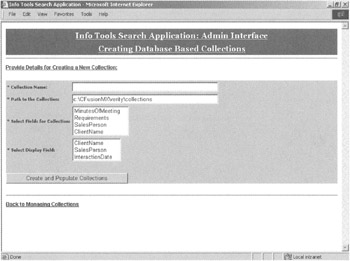
Figure 21.3: The Create Database Collections page.
Users other than the administrator will use the Document Collection Search page to search for the desired information. Users can also specify the collection to be used for searching. The Document Collection Search page is shown in Figure 21.4.

Figure 21.4: The Document Collection Search page.
After the user provides the search criteria, the user can click the Search Document Collection button to view the search results. The search results are displayed, as shown in Figure 21.5.
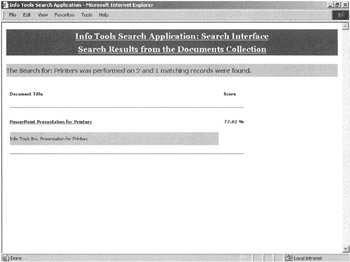
Figure 21.5: The Document Collection Search Results page.
Each record in the Search Results page displays the title of the document as a hyperlink. Users can view the content of the document by clicking this link. The document can be opened from the Web server or downloaded, depending on the browser support for the file type.
The Database Collection Search page is used to search for the desired information in the database collections. Users can also specify the collection to be used for searching. The search interface is shown in Figure 21.6.

Figure 21.6: The Database Collection Search page.
After providing the search criteria, the user can click the Search Database Collection button to view the search results. The search results are displayed as shown in Figure 21.7.
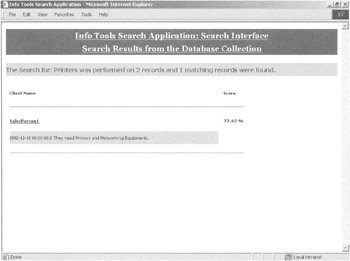
Figure 21.7: The Database Collection Search Results page.
Each record in the Search Results page displays one of the fields as a hyperlink. While creating the collection, the administrator chooses the field to be hyper-linked. Users can view the content of the individual records by clicking this link. The detailed record is displayed in the Sales Interaction Detailed View page, as shown in Figure 21.8.
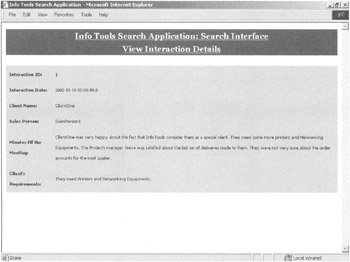
Figure 21.8: The Sales Interaction Detailed View page.
|
EAN: 2147483647
Pages: 200